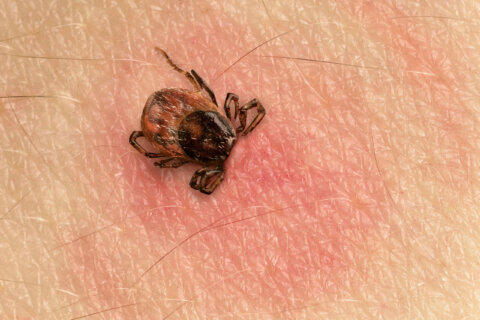Reflection increases exposure.
If you’ve ever had a sunburn, you know the pain of too much sun exposure.
Many people realize they’re exposed to more of the sun’s ultraviolet rays when they go to the beach, a lake or a pool because the water and sand reflect sunlight onto the skin. This creates indirect exposure to UV rays, in addition to the direct exposure you get from the sun beating down on your skin.
You also may know that UV exposure is greater in the mountains where the air is thinner and the sun’s rays are more intense. This is all true, and it calls for extra protection for your skin.
But it’s a mistake to overlook less-known factors that can increase your skin’s exposure and/or sensitivity to the sun’s harmful rays.
What is sun sensitivity?
For starters, “skin type and genetics play a role in how sensitive you may be to sun exposure,” says Dr. Susan Massick, a board-certified dermatologist and associate professor of dermatology at the Ohio State University Wexner Medical Center in Columbus.
“Fair skin and (light or) red hair make you more susceptible to damaging ultraviolet rays and put you at higher risk for sunburn, sun damage and skin cancer.”
But any skin type can be photosensitive.
Other agents can make you more sun sensitive too.
It’s not just your natural protection against the sun that’s at play. Some foods, medications and personal care products can increase the risk of getting a bad sunburn or other symptoms.
Think of it this way: Certain agents that create photosensitivity contain chemicals that are “like gunpowder, and UV radiation is the match that causes the reaction to happen,” explains Dr. Bruce Robinson, a board-certified dermatologist in private practice and clinical professor of dermatology at Lenox Hill Hospital in New York City. “When UV light hits that chemical, it causes a reaction like an explosion in the skin, and you get damage.”
There are two kinds of photosensitivity.
Photosensitivity can be divided into two types of reactions:
— Phototoxic reactions look and feel like a severe sunburn and occur within hours of exposure. “You can develop redness, swelling, even blistering from phototoxic reactions,” Massick says. These reactions result from a photosensitizer being activated by direct exposure to UV light and resulting in cell damage. They’re usually limited to sun-exposed areas such as the face, V of the neck and upper chest and the upper shoulders. These reactions depend on the dose of sunlight, or how much sun you get and how long you’re exposed.
— Photoallergic reactions are “more rashy than sunburn in approach with itchy patches, redness and occasionally blistering,” Massick says. They’re a hypersensitivity reaction caused by the immune system responding to an exposure on the skin or ingestion of an allergen that induces an allergic reaction. These reactions can get progressively worse with each exposure. They usually peak within 24 to 72 hours, “but can take much longer for discoloration or post-inflammatory hyperpigmentation to resolve,” she notes. As with any allergen, “you can develop a hypersensitivity reaction to an exposure that triggers an immune response.”
Beyond your basic skin type, there are a range of other factors that can lead to a photoallergic or phototoxic reaction. Here are five triggers:
1. Medical conditions
Photosensitivity is more common in people with certain autoimmune diseases such as lupus, Massick says. “For autoimmune conditions, such as lupus and dermatomyositis, sun exposure can make the skin” develop more redness, irritation and in some cases scarring.
Acquired conditions like polymorphic light eruptions, an itchy rash that occurs with sun exposure in those who have developed a sun sensitivity, are another type of condition that can cause problems.
Massick notes that some genetic diseases, such as xeroderma pigmentosum, basal cell nevus syndrome and porphyrias are extremely sun-sensitizing. With these conditions “the cell damage from UV exposure cannot be repaired and accumulated sun exposure will lead to early onset and aggressive types of skin cancer.”
As such, people with these conditions must practice “strict sun avoidance to avoid development of skin cancers.” But this isn’t always easy to do as “you can’t completely avoid the sun all the time,” she says. For people with these conditions, “the focus is on minimizing sun exposure, being smart about when it’s safe to be outdoors and being consistent with sun protection.”
2. Medications
Certain medications can make it far more likely that you’ll burn when exposed to sunlight. Known photosensitizing drugs include:
— Antibiotics, including drugs in the tetracycline family (doxycycline), fluoroquinolones (ciprofloxacin) and sulfonamides (sulfa containing).
— Nonsteroidal anti-inflammatory drugs such as ibuprofen, ketoprofen and naproxen.
— Diuretics, including hydrochlorothiazide and furosemide, which may be used to treat high blood pressure, edema, heart failure and other conditions where fluid accumulation is an issue.
— Systemic retinoids, such as isotretinoin, which may be used to treat cystic acne.
— Antipsychotics such as phenothiazines.
— Cancer immunotherapies such as vemurafenib, which is used to treat some skin cancers.
— Oral diabetes drugs such as sulfonylureas.
— Tricyclic antidepressants.
— Herbal drugs, such as St. John’s wort, which is taken for depression and anxiety.
3. Foods
Consuming certain foods can increase sun sensitivity, as compounds within these food can cause the skin to react more to the sun’s rays. Ones to watch out for include:
— Carrots.
— Celery.
— Citrus fruits such as limes.
— Fennel.
— Figs.
— Wild dill.
— Wild parsley.
— Wild parsnips.
These reactions are sometimes referred to as phytophotodermatitis, Massick explains. “Phytophoto” means plant plus UV light and “dermatitis” refers to the rash that occurs with exposure to certain plants that contain a chemical called furocoumarin.
“Furocoumarins become activated when exposed to the UV light, and you develop a skin rash wherever your skin comes into contact with the chemical.” All of the foods listed above contain furocoumarins.
4. Perfumes and essential oils
Certain perfumes can take a toll on your skin, Massick says. These products “often contain the chemical sensitizer bergapten,” which can augment the effects of the sun. Fragrances, musk and essential oils like lavender, rosemary and sandalwood can all make your skin more reactive to the sun.
5. Skin care products
Certain skin care products, specifically those used to treat acne, can drastically increase your sun sensitivity. Check for ingredients such as:
— Alpha-hydroxy acids (AHAs like glycolic acid).
— Beta-hydroxy acids (BHAs like salicylic acid).
— Tretinoins (like Retin-A).
Each of these agents strips the outer layer of the skin, the stratum corneum, which makes the skin more sensitive to the sun.
Plus, the chemical benzoyl peroxide, which is in many over-the-counter acne products, can also cause photosensitivity.
Photosensitivity reactions aren’t universal.
Not everyone who takes a certain drug or uses a particular product will experience photosensitivity, notes Dr. D’Anne Kleinsmith, a board-certified dermatologist at William Beaumont Hospital, Royal, and the Midwest Center for Dermatology and Cosmetic Surgery in Farmington Hills, Michigan.
And even if you do have a photosensitive reaction on one occasion, that doesn’t guarantee that you will again or every time you use or ingest that substance.
Still, if you have a reaction, it’s important to determine what’s causing it, Massick says. “These reactions are temporary and will resolve, but the key is to identify the culprit. If the culprit can’t be identified or, in the case of long-term medications, can’t be discontinued, then the focus should be on minimizing sun exposure and maximizing sun protection.”
Follow safe sun-exposure guidelines to reduce reactions.
Whether you’re using or consuming any photosensitizing ingredients or not, you should try to limit your exposure to the strongest rays of the sun. The sun’s rays are strongest between 11 a.m. and 3 p.m., so “you should try to do outdoor activities in the early morning or the late afternoon,” Kleinsmith says. And wear sun-protective clothing and wide-brimmed hats when you’re outdoors.
Pick a good sunscreen.
In addition, take extra precautions before spending time in the sun: Choose a water-resistant sunscreen that protects against the sun’s UVA and UVB rays. Look for the words “broad spectrum.”
“Creams and lotions work better than sprays,” Kleinsmith notes. Apply a sunscreen with SPF 30 every day — sun protection factor 50 or more if you’re going to the beach or golfing — 20 to 30 minutes before you go outside. And reapply it every 1 1/2 to two hours while you’re outdoors.
Most people don’t put on enough sunscreen, experts say, so apply at least a shot glass full (one ounce) each time.
Consider a supplement.
If you’re going to the beach and you’re sun-sensitive, Kleinsmith recommends taking an oral antioxidant supplement like Heliocare in the morning. This supplement contains an extract of Polypodium leucotomos, a tropical fern that’s rich in antioxidant compounds that protect the skin from free radical damage.
“It’s another adjunctive treatment in the skin-protection program,” Kleinsmith says. While such a move does not replace sunblock, it can help add an edge of protection, increasing your odds of preventing a painful sunburn or unexpected skin damage from ruining your summer fun.
5 surprising things that can increase sun sensitivity:
1. Medical conditions.
2. Medications.
3. Foods.
4. Perfumes and essential oils.
5. Skin care products.
More from U.S. News
Questions to Ask a Dermatologist
Surprising Facts About Sunscreen
Best Products for Summer Health Hazards
Surprising Things that Can Increase Sun Sensitivity originally appeared on usnews.com
Update 07/14/21: This story was previously published at an earlier date and has been updated with new information.







